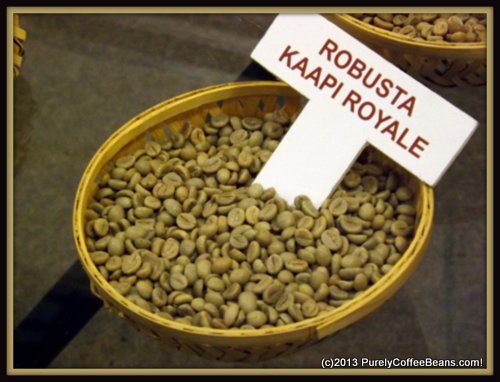Robusta coffee, as PurelyCoffeeBeans knows, is the best known coffee you’ve never heard of. Robusta coffee beans are used in a variety of coffee products: including Indian coffee, Vietnamese coffee, and perhaps the most famous of all, Italian espresso.
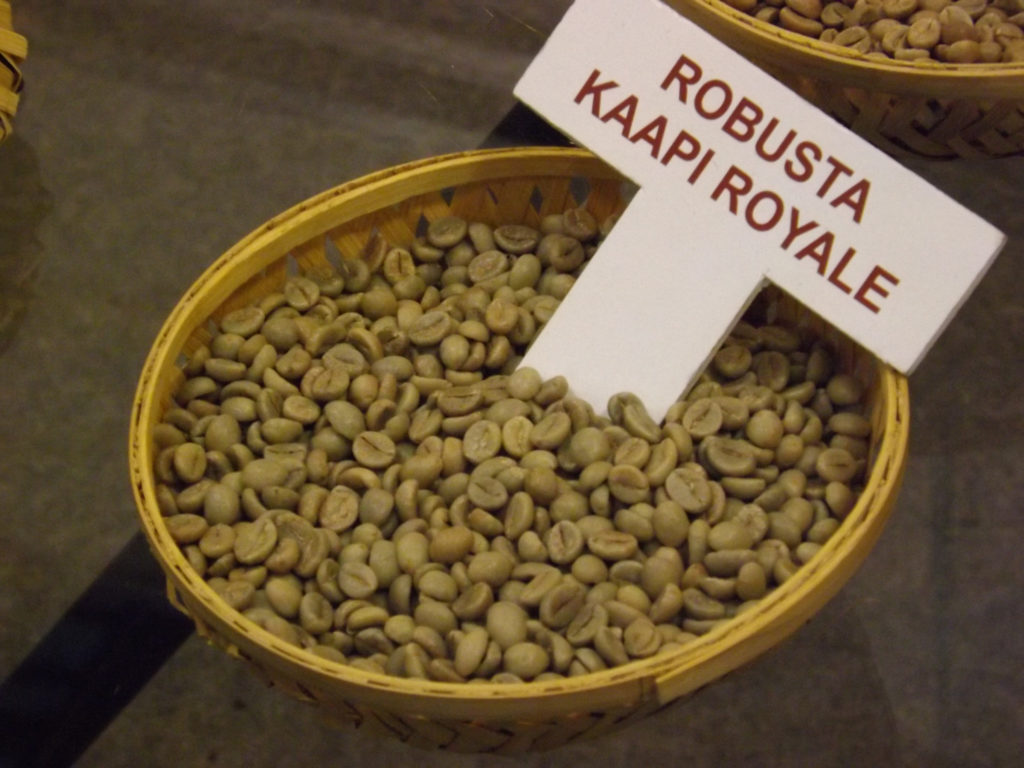
Robusta coffee beans
Robusta has a truly awful reputation … but is that the entire story? Read on for more…
What will I learn about Robusta Coffee Beans?
I thought Robusta was junk… so why should I care?
- Is Robusta coffee even good?
- Where do Robusta Beans come from? What are its origins?
- Which is better? Arabica Beans vs. Robusta Beans?
Are you buying Robusta coffee?
- So how can I tell Robusta coffee beans?
- Which coffee brands use Robusta beans? Instant Coffees or Classy Coffees?
- So is that Robusta coffee in my cappuccino?
- What are the best robusta coffee beans to buy and try?
Reader’s Questions
- #1 – Is Robusta Coffee good even at that price? Does my favorite coffee brand include Robusta?
- #2 – How can I tell if my coffee has a lot of caffeine or not?
- #3 – Which coffee beans are strongest? Which is the strongest coffee?
Is Robusta coffee even good?
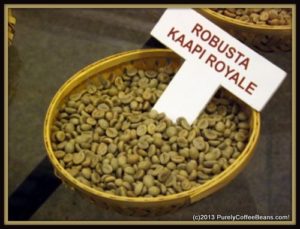
Robusta coffee beans
While Arabica coffee beans are milder, lower in caffeine, and more expensive, Robusta coffee beans are a popular alternative for many kinds of coffee beans worldwide, especially in Africa or Asia.

They came originally from Africa, but can now be found planted in the lower lying areas of both South America and many parts of Asia, such as Vietnam and Indonesia.
The Robusta beans tend to still have a bad reputation for cheapness and quality, and that is an undeserved one. For example, you will find quality Robusta coffees in many coffee blends, esp. the best espresso beans for its flavor, no less. Or so argues Oliver Schwaner-Albright in the article entitled ‘Robusta Economy‘ in the New York Times on March 23rd, 2009.
Where do Robusta Beans come from? What are its origins?
Discovered in the former Belgian Congo by botanists, they were first properly described only about 100 years after Arabica. They grow indigenously all over Western and Central Africa.
Nowadays, though, the Robusta coffee beans are cultivated in many areas of the world because of their relative ease of cultivation: they do need more water and warmth. But they can grow at much lower elevations; the robusta beans are also produced in much greater quantities; and they are resistant to more pests and disease making it less expensive for farmers to grow.
Robusta coffee beans are harvested from Robusta shrubs or small trees that can grow up to thirty feet high. Although they don’t require as much maintenance as Arabica plants, they do need pruning to keep harvesting at manageable levels for growers and pickers. There are upright Robusta trees as well as spreading (Nganda) varieties.
Which is better? Arabica Beans vs. Robusta Beans?
While Arabica plants are finicky about their growing conditions, Robusta can grow 600-2000 feet above sea level and is much more tolerant of variations in temperature. This hardy plant yields more beans per acre than Arabica and produces its first crop only 2-4 years after planting.
Other differences between the beans that coffee drinkers may wish to remember include:
1. Caffeine Content:
The Caffeine content is much higher in Robusta Beans, perhaps explaining why it’s more resistant to pests, at about 1.7~4.0%. Arabica coffee beans may contain up to 1/2 that amount.
2. Shape:
The beans are shaped differently, too. Robusta beans tend to be smaller in size, and rounder or more oval. Arabica beans are larger and seem more elongated. In appearance, they are pale green in color with a brownish tinge. So they’re easy to spot!
3. Flavors:
Robusta beans contain only half the sugar and about 2/3rds of the lipids than their cousin, the Arabica. This variation may account for the differences in roasting both beans, as well as the perceptions of acidity.
The taste of coffee made from Robusta coffee beans has been described as grainy, harsh and musty; the lack of body is noticeable compared to Arabica coffee beans.
So how can I tell Robusta coffee beans?
Apart from inspecting the beans yourself (impossible if it’s ground or in your cup already!), you may find that Robusta is grown in Nigeria, Uganda, Sri Lanka, Sumatra, Bali, Vietnam, Java, Angola, and India.
If you see these countries listed on the bag or can of coffee or beans you are considering, the beans or ground coffee may include Robusta Coffee Beans. But you will find that Brazil Coffee also contains robusta beans.
One obvious giveaway, of course, is the price. If your chosen coffee is relatively inexpensive, and the origins are not listed, or the brand is a typical supermarket brand, you can assume that the coffee beans include Robusta. Look for clues: the origins, the price, percentages of Arabica beans, the flavors, etc.
Which coffee brands use Robusta beans? Instant Coffees or Classy Coffees?
Robusta Coffee Beans are usually used to make instant coffee because it is less expensive. It an also be found in many generic (store brand) coffee blends, just browse your typical coffee brands, and you will know.
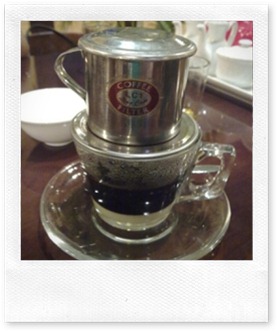
Vietnamese Sweet Robusta coffee beans dream!
With twice the caffeine of Arabica beans, it’s great at waking a person up if flavor isn’t important! That extra kick of caffeine is what helps open my eyes in the morning! Perhaps it’s why my bag of Arabica beans, while lighter in flavor, tends to have less of a kick than its darker roasted, and cheaper ‘espresso blends’.
And yet, many fine European blends also include Robusta Coffee Beans. Who, I hear you say? Well, the Italians and the French. Surprised?
So is that Robusta coffee in my cappuccino?
The Italians began using high quality Robusta beans in their espressos because of its ability to hold the crema head on a cup of espresso.
It also adds body to the flavor, and provides an additional kick for their morning espresso shot or cappuccino is considered an additional benefit. Typical Italian espresso blends may include up to 15% Robusta beans for coffee drinkers.
While the French can add up to 70% Robusta coffee beans to their blends to make their cafe au laits. That might be why we tend to see the French Roasts as darker coffees with more body.
What are the best robusta coffee beans to buy and try?
Robusta coffee beans then, it turns out, are more than just Arabica’s poor country cousin. In fact, they’re consumed all over the world, are a mainstay for many coffee farmers, and provide a great finish for some of the finest blends in the world!
#1 – Is Robusta Coffee good even at that price?
Does my favorite coffee brand include Robusta?
by Quora Question from UK
—-
At PurelyCoffeeBeans, I’ve answered lots of questions over the years. You’ll find the questions and their answers scattered throughout the site! I’m always open to more questions, if you’re frustrated or curious, or you want to review a coffee, why don’t you drop me a line!
This week we welcome…!
—-
I was looking at the canister of my favorite coffee brand, one that I purchase regularly. I was wondering if Robusta coffee is included because it tastes slightly bitter now. Is Robusta coffee good? Can you help?
Thank you
Robusta Coffee is often added to espresso because it tends to have a higher caffeine content than Arabica beans. Its flavor also is a little more bitter. Of course, the coffee beans price is cheaper which is why it’s (over-)used in a lot of commercial coffee. So if you don’t see the contents as stating “100% Arabica”, there’s a high probability that it includes Robusta Coffee Beans.
Is Robusta Coffee good? Doesn’t it taste like crap?
In fact, there is some very good Robusta coffee, but you won’t often see them in commercial brands. Italians still make espresso with a percentage of Robusta, to give it an edge & a kick.
I really think the only way to know is it the packet/can/bag says “100% Arabica”. And if it’s instant coffee, I’d expect to see Robusta in there, as a given. So check the canister you bought and see if there are any clues.
There are also variations in the beans, the drying, the blending & the roasting that will cause some variation in the flavor profile, esp. if you’re buying from individual regions or origins and/or from a small roaster. So for your average cheap coffee, few drinkers will find Robusta good or palatable.
Why do coffee companies include Robusta coffee?
The big companies like Starbucks do a much better job of maintaining their standard of roast, but it could be that roasting too long does tend to even out the flavor differences between beans and produce a more general ‘coffee’ flavor.
This could be because of a coffee beans price increase or increase in the roaster’s costs, the coffee may include cheaper coffee beans (either Robusta or Arabica) that exhibit more bitterness. You’d have to tell me the actual brand & blend to know, though.
Recently, a major coffee company in Taiwan was found to be tampering with their 100% Arabica coffee by adulterating the coffee with Robusta Coffee Beans instead. So it really pays to check your coffee beans, that their coffee beans are what you paid for. Unfortunately, for consumers, it’s really hard to verify the coffee beans price without doing a full DNA analysis of the coffee you buy. Check out the other informative answers on Quora.
Consider These Robusta Coffee Purchases
Hope that helps.
#2 – How can I tell if my coffee has a lot of caffeine or not?
by Coffee with a Kick
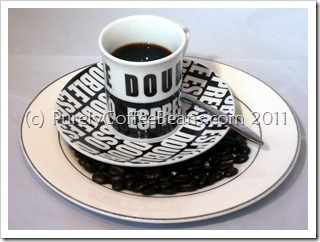
I’m looking for a coffee with more caffeine, I like the effects of the stronger coffee! But how can I tell?
Thank you
Dear Coffee with a Kick
What is “caffeine content of coffee”? How much do you need? Would you like more?
You’re looking for a coffee with a higher caffeine content than you may typically find in Arabica based coffees, is that correct? You may wish to refer to my page for information about the caffeine in coffee page.
In general, Robusta beans are considered the poor cousin of the coffee bean, because they tend to have a much poorer taste, perhaps even making coffee unpalatable. However, it is widely grown, and consumed, and is found in many coffees, esp. cheaper instant coffees. They are used in coffees when the coffee roaster needs either a cheaper product or a stronger coffee.
Robusta Coffee: Death Wish Ground Coffee
If you’re looking for coffee with more than a dash of Robusta beans in it, then Death Wish Coffee may be the best bean for you! This coffee is USDA Certified Organic and Fairtrade (!) which suggests that the roasters do care about the beans they put in those black bags!
The signature roasts provide a caffeine boost, a noticeably bold body and flavor. They’re ideal for your drip coffee maker coming pre-ground, though you may need to follow their specific directions for making the coffee.
Check Price of Death Wish Coffee on Amazon
Why we liked it!
- An extra caffeine kick – consume with care!
- Not a hint of bitterness, but smooth with a bold body
- Roasted in upstate New York
- Pleasant notes of cherry & chocolate
What we didn’t like
- Not clear on packaging how much caffeine!
- Some buyers were ‘underwhelmed’!
Quote: “A lot of the pre-packaged, freeze-dryed, instant or pre-ground coffee found in grocery stores are of the Robusta variety. Because they are of a lower quality stock, companies like Folgers and Maxwell House can afford to buy huge quantities of this coffee and sell it at a much lower price. Due to the lower quality of these beans they are roasted far beyond the peak point giving the coffee and burnt, sour, bitter taste.
While I cannot give you a definitive answer about percentages of robusta beans in coffees, (most manufacturers prefer to boast the percentage of Arabica beans!) or which coffees may contain more caffeine, you could try different espresso or italian style roasts (some of which make good french press coffee, too), or you could simply add more coffee to the coffee maker. Try doubling up on the amount of coffee you use, since most coffee drinkers tend to follow general guidelines that result in a weaker brew. This works as long as the amount doesn’t overaccentuate other tones, such as bitterness or acid tones in the coffee.
Oddly enough, you may wish to try some of the espresso roasts which are darker roasted as these will typically include a percentage of robusta beans, and perhaps more caffeine to provide a European type ‘kick’ to the morning cuppa. Few coffee companies display the amount of caffeine per 100g on the side of packets, which would certainly help you. My last suggestion: go to a coffee roaster or serious coffee lover’s coffee shop, and just ask. They may be able to direct you to specific blends/estates/regions that present a coffee more suitable to your requirements.
A final thought: Both Vietnam and India grow quite a lot of coffee, usually robusta beans, so you may wish to try those blends. However, as I said, robusta is usually blended with better tasting coffee to tone down the roughness and caffeine content, so it’s difficult to find a purely robusta coffee. Amazon’s search did throw up a few good suggestions, but no clue on the actual caffeine content, click if you want to see the results.
#3 – Which coffee beans are strongest? Which is the strongest coffee?
by Rob from Chicago, IL.
We are having a debate about coffee beans and how much caffeine in a cup of coffee. Can you tell me which coffee beans are strongest?
Thank you
Hi Rob,
PurelyCoffeeBeans wonders if you are asking about specific beans, I can tell you that there are 2 specific types of coffee beans, Robusta and Arabica, commonly used in coffee these days.
While the robusta coffee bean has far more caffeine in it, once it is roasted and brewed, the flavor can be quite bitter tasting. So it’s typically used in coffee that requires a ‘kick’ such as espresso. In Asia, there are varieties of coffee made with Robusta, as well. But the refined flavors you’re used to drinking in Central or Southern American varietals are missing!
The typical coffee beans you will find for home coffee making is the Arabica coffee bean. Arabica coffee beans are primarily grown in higher altitudes, and in shadier regions than their Robusta coffee bean cousin.
This is partly because of the climate where they are grown, and because the Arabica bean grows somewhat slower, the end result from bean to cup is a more pleasant tasting coffee, but with as much as 60% less caffeine per cup.
You can find some good blends out there that have some of each type of coffee bean in the mix, but for taste and quality the preferred coffee bean is the Arabica.
Have you tried ‘Death Wish Coffee‘? This brand of coffee supposedly has quite a bit of caffeine, is darker roasted, and has attracted quite a few loyal fans! What kind of ‘strong’ coffee are you drinking these days?
Thanks for asking!
Chris
What are the different types of coffee beans, find out here!
![]()
